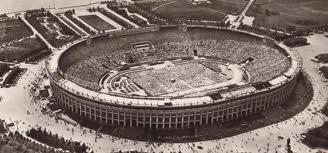

The tragedy in Luzhniki. Facts and Fiction
october20.ru
The other day, the media spoke about the tragedy that occurred on October 20, 1982 at the stadium in Luzhniki, where people died as a result of a stampede. The victims are named – there are hundreds of them. Is it so! What really happened, and what documents have been preserved about this tragedy! The Izvestia correspondent is talking with the investigator for particularly important cases of the Moscow Prosecutor’s Office A. SPEER, who was investigating the criminal case.
The Luzhniki Disaster – The History of Football’s Chernobyl
futbolgrad.com
The Luzhniki Disaster of 1982 in Moscow is not one such household name. For nearly a decade, even Soviet citizens were unaware that something dreadful had occurred at the stadium on October 20 of that year. It was not until the reforms of Gorbachev that the press began to report on the disaster and the people learned the truth, or as close to the truth as was possible, so many years removed from the tragedy. The Luzhniki disaster, its subsequent cover-up, and the much-delayed unmasking of the truth offer a glimpse into 1980s Soviet society, from the secrecy and tenseness of the late Brezhnev years through the relative openness and liberalism of Gorbachev’s glasnost. Its social and political significance was not lost on the football historian David Goldblatt, who has deemed it ‘football’s Chernobyl.’
Moscow’s secret tragedy – hundreds of fans crushed to death
theguardian.com
When more than 40,000 English fans converge on Moscow’s Olympic Stadium for the Champions League final on 21 May, they might spare a thought for the stadium’s history. The original sports club beside the Moscow River was the British River Yacht Club. But those toffs had their club commandeered in 1917 by red ‘ruffians’ who turned it into the Red Stadium and laid out a pitch for the workers’ game, football
On Sunday, France take on Croatia in the World Cup final in the Luzhniki Stadium in Moscow. But the darkest chapter of the stadium’s history, when at least 66 people lost their lives in 1982, has largely been forgotten.
The Black Secret of Luzhniki – Between Memory and Oblivion
russianfootballnews.com
20th October 1982, Sixty-six Spartak Moscow fans would traverse up the stairway on Tribune C of the Central Lenin Stadium, the current Luzhniki, for a UEFA Cup game against Dutch side HFC Haarlem. This would be the last time they would ever make their journey, as, during injury time, they tragically died in a stampede, the majority of which were adolescents enjoying their first-ever game. 38 of the victims were aged eighteen or under, with the youngest, schoolboy Volodya Anikin, who had just celebrated his fourteenth birthday. To this ay it is still the largest ever sporting disaster in Russian and Soviet history.
On This Day: Remembering the Luzhniki stadium’s forgotten disaster
sportstar.thehindu.com
On this day, 37 years ago, a group of fans — many of them adolescents — went to watch a football match in Moscow …and never returned.
An elaborate cover-up by the state followed which saw the incident being shelved, only for it to resurface once again seven years later. This time, the official death toll of the incident was declared to be 66, with some reports suggesting that even this figure was a far cry from the actual body count.
placeandsee.com
The Luzhniki disaster was a deadly human crush that took place at the Grand Sports Arena of the Central Lenin Stadium (Russian: Большая спортивная арена Центрального стадиона им. В. И. Ленина, now known as Luzhniki Stadium) in Moscow during the 1982–83 UEFA Cup match between FC Spartak Moscow and HFC Haarlem on 20 October 1982. According to the official enquiry, 66 FC Spartak Moscow fans,ref name=ize/>mostly adolescents, died in the stampede, which made it Russia’s worst sporting disaster. The number of fatalities in this crush was not officially revealed until seven years later, in 1989. Until then, this figure varied in press reports from 3 to 340 fatalities. The circumstances of this disaster are similar to those of the second Ibrox disaster in Scotland.
theawaysection.com
The sky had been grey, cold and dark; it was a freezing evening verging on Siberian temperatures. In the Soviet capital of Moscow, the air had already reached -10 by the time of kick-off. The notorious Russian weather was biting the air making it a challenging evening for players, home fans and the 100 who travelled from Holland.
Have a look at what we have on the site. All the content is to assist and improve crowd safety at events and crowded placed.